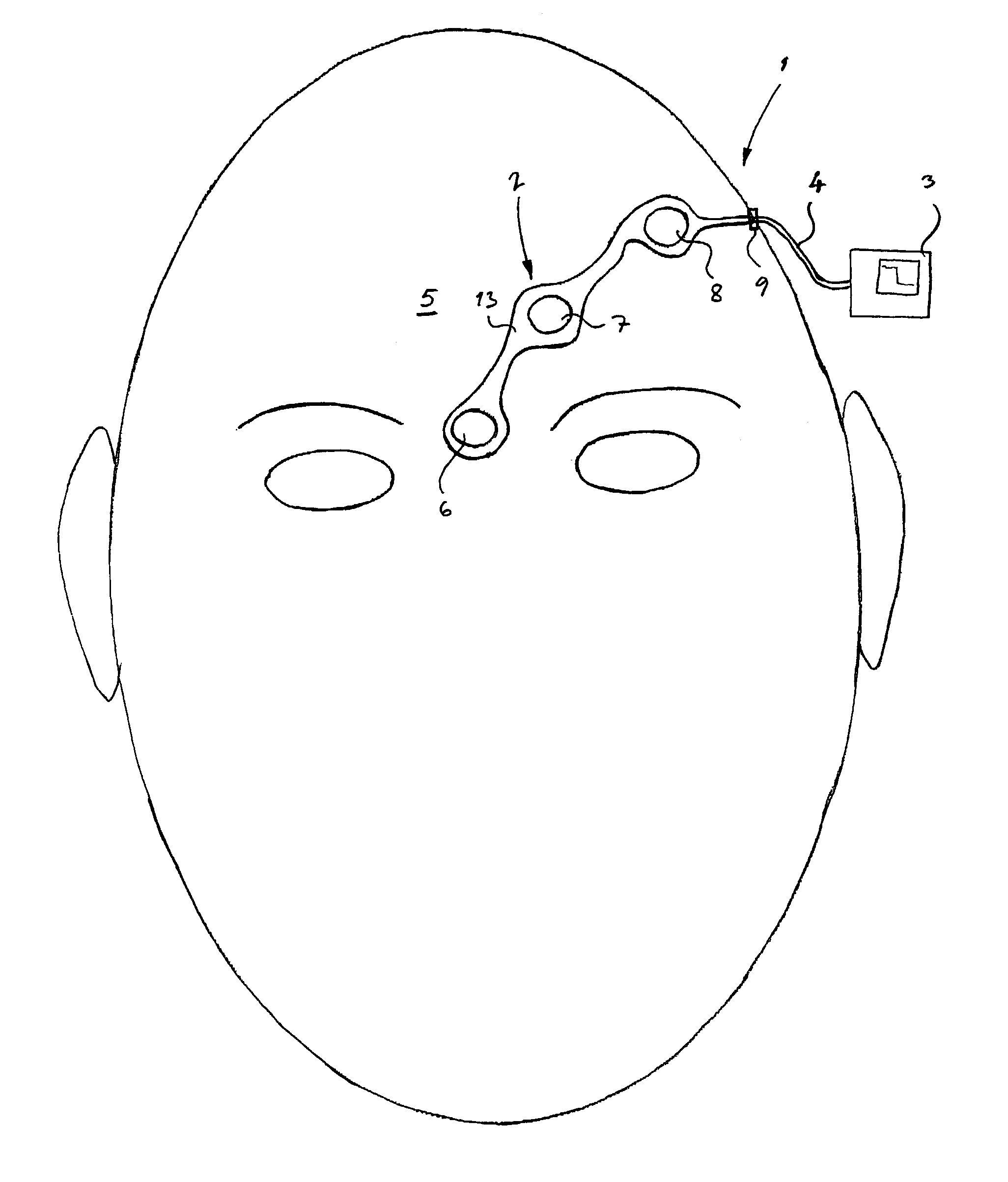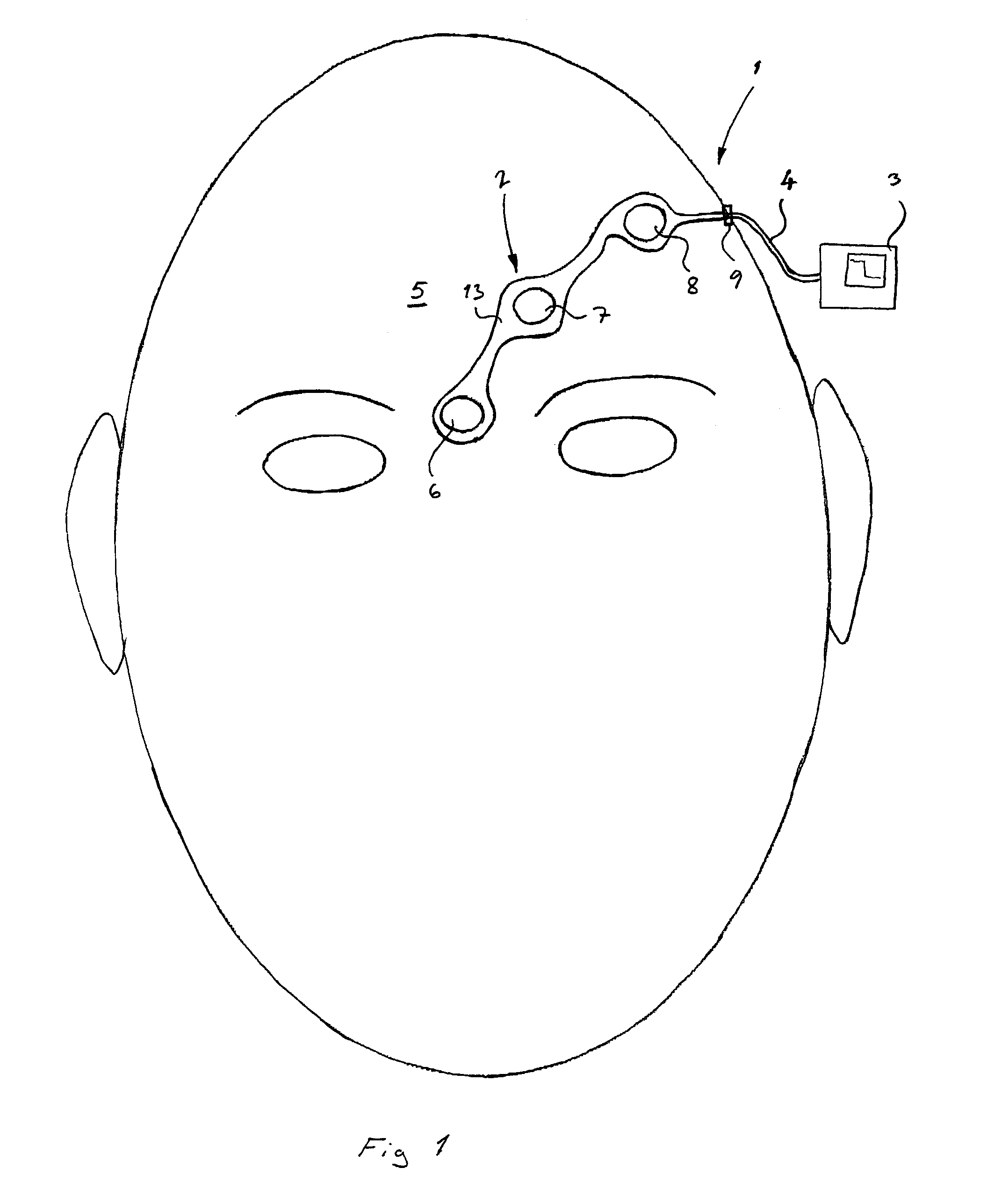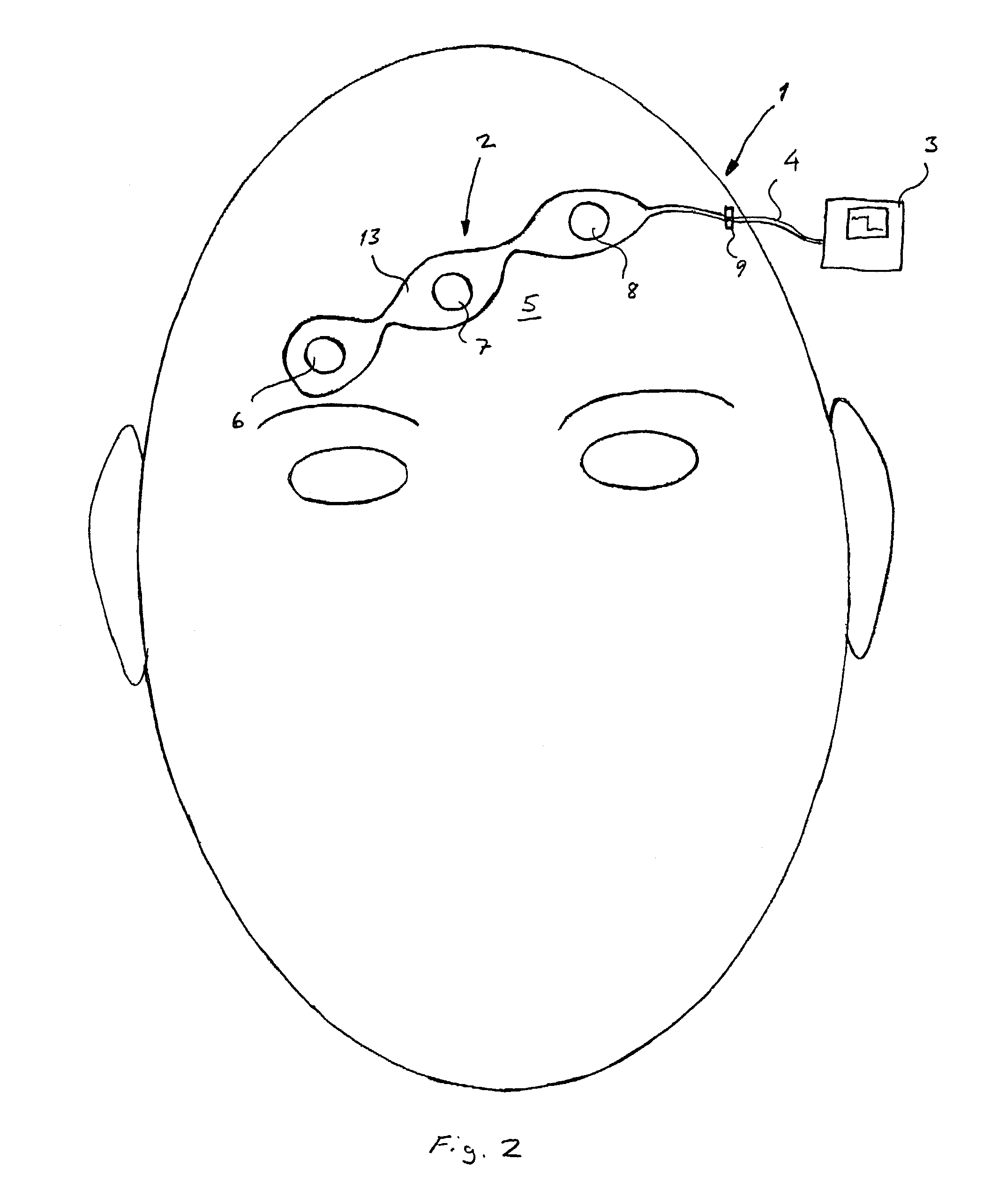Method of positioning electrodes for central nervous system monitoring and sensing pain reactions of a patient
a central nervous system and electrode positioning technology, applied in electromyography, medical science, sensors, etc., can solve the problems of patient wake-up, cumbersome attachment of multiple electrodes, and high cost, and achieve optimal measurement results, simple and practical, reliable, and reasonable low cost
- Summary
- Abstract
- Description
- Claims
- Application Information
AI Technical Summary
Benefits of technology
Problems solved by technology
Method used
Image
Examples
Embodiment Construction
[0019]Referring now to the figures in which corresponding details in different embodiments have been marked with same reference numerals, the sensor measurement system of the present invention is indicated generally at 1 in FIG. 1. The system 1 includes an electrode array 2 connected to a monitor 3 by a cable 4. The array 2 transmits central nervous system (CNS) signals from the forehead 5 of the patient to the monitor 3, which carries out signal processing and displays EEG and FEMG data in desired form. The data obtained can also be stored for future use.
[0020]The electrode array 2 shown in FIG. 1 comprises three electrodes, ie. the first electrode 6, the second electrode 7 and the third electrode 8. The structure of the array 2 is shown more clearly in FIG. 5. The electrodes 6, 7 and 8 have been connected to a connector 9 by using conductors 10, 11 and 12. The electrodes and the conductors have been placed on a flexible substrate 13 made of an appropriate material, for example pla...
PUM
 Login to View More
Login to View More Abstract
Description
Claims
Application Information
 Login to View More
Login to View More - R&D
- Intellectual Property
- Life Sciences
- Materials
- Tech Scout
- Unparalleled Data Quality
- Higher Quality Content
- 60% Fewer Hallucinations
Browse by: Latest US Patents, China's latest patents, Technical Efficacy Thesaurus, Application Domain, Technology Topic, Popular Technical Reports.
© 2025 PatSnap. All rights reserved.Legal|Privacy policy|Modern Slavery Act Transparency Statement|Sitemap|About US| Contact US: help@patsnap.com



